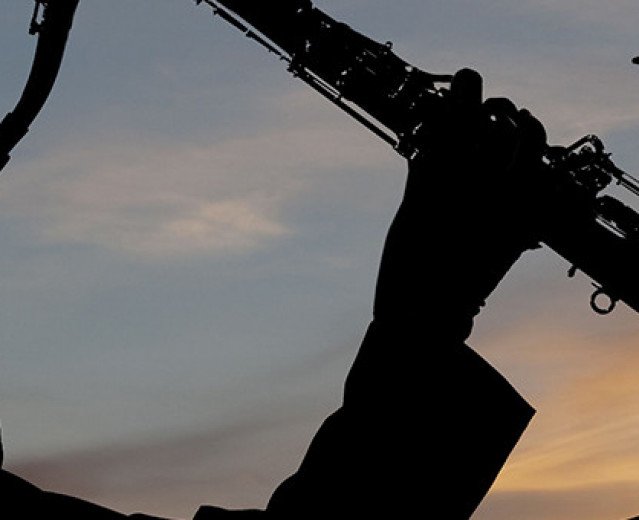Invented by the Belgian Adolphe Sax in 1841 with the purpose of unifying the woodwind and the brass families. It is a single reed instrument made of brass in most cases. It is comprised of five parts: the Mouthpiece, the Chiver, the body, the keywork and the Bell.
The Sax usually has a powerful voice, projecting
a loud sound, and thanks to these properties has became indispensable in the
marching bands and it’s always present in the Jazz swing bands, appearing more
and more often in contemporary music.
The sax family comprises the Sopranino Sax, the Soprano
in Bb (straight and U shaped), the Contralto Sax in Eb, the Tenor sax in Bb, the
Baritone sax in Eb, the Bass and Contrabass sax.
The most
common types are:
- The Soprano Sax

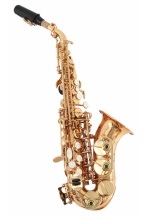
The Soprano Sax can have
straight or a U-shaped design (like the alto
sax). Some manufacturers offer a
slightly curved model, called "saxello", but typically the neck is curved
toward the musician and the bell points upward, even rarer is the "Tipped
Bell" sax, an instrument manufactured by Buescher around the 20’s and recently
offered by popular brands, essentially shaped like the straight soprano, but
the bell in the last 10-12 cm curves abruptly upward. The sound of the Soprano is
typically nasal and thin.
The soprano Sax is a transposing instrument in Bb, with a note range
from Bb 4 to F# 7 (actual notes from Ab to E)



Written note range

Actual sounds
- The Contralto Sax
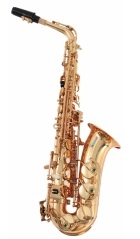
Also known as Alto, offers the best compromise
between dimensions and weight, a virtuoso’s instrument par excellence, agile and fast,
with a quite loud voice. A principal instrument in Jazz and Bee Bop music,
thanks to musicians who made it famous and popular like Charlie Parker, Ornette
Coleman, Lee Konitz. Today we can find it often and often in the classic
orchestra. You can hear a famous solo in the Ravel’s Bolero.
The Sax Alto is a transposing instrument in Eb, with a note range from Bb
2 to F#5 (actual notes from Db2 to A5)

Written note range

Actual sounds
·
- The Tenor Sax
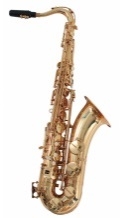
It’s the most representative member of the family,
easily recognizable by the bent Chiver. Used mainly in military bands and
orchestras both Jazz and classical, it’s a fundamental instrument in the sax quartets.
The tenor Sax is a transposing instrument in Bb, with a note range from Bb3
to F#6 (actual notes from Ab3 to E6)


Note range of the tenor sax
- The Baritone sax
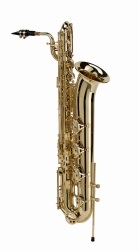
It is the voice in the baritone register of the
sax family, easily recognizable by its dimensions and
the loop in the neck to reduce the height, making it more portable and playable.
The modern Baritone sax has a longer bell with an added “low A” key. Used mainly in classical music and to some
extent in Jazz music, it’s a fundamental instrument in the sax quartets. Widely
used in marching bands in the baritone section, instead of or doubling the tuba
part, offering a major rhythmical support to the musical composition.
The Baritone Sax is a transposing instrument in Eb, with a note range from Bb4 to F#7 (actual notes from Db3 to A5)


Actual sounds
Less popular Sax
- Sax Sopranino in Eb, very rare, comes in two shapes: straight and U-shaped
- Soprano Sax in C like the C-melody, pitched an octave higher, extremely rare
- Bass Sax in Bb fairly rare, with a note range an octave lower than the tenor sax. Represents the fundamental bass inside the standard saxophone orchestra (12 elements: 1 sopranino, 2 sopranos, 3 altos, 3 tenors, 2 baritones, 1 bass). It was used during the 20’s and 30’s in the Dixieland bands. A component of the typical “bande da giro” in southern Italy, its tone, mixed with the one of baritone sax, creates reach textures.
- Contrabass Sax: in Eb and in C, only in the form of Tubax (or sub-contrabass sax), are extremely large, heavy and often are only built to order.
